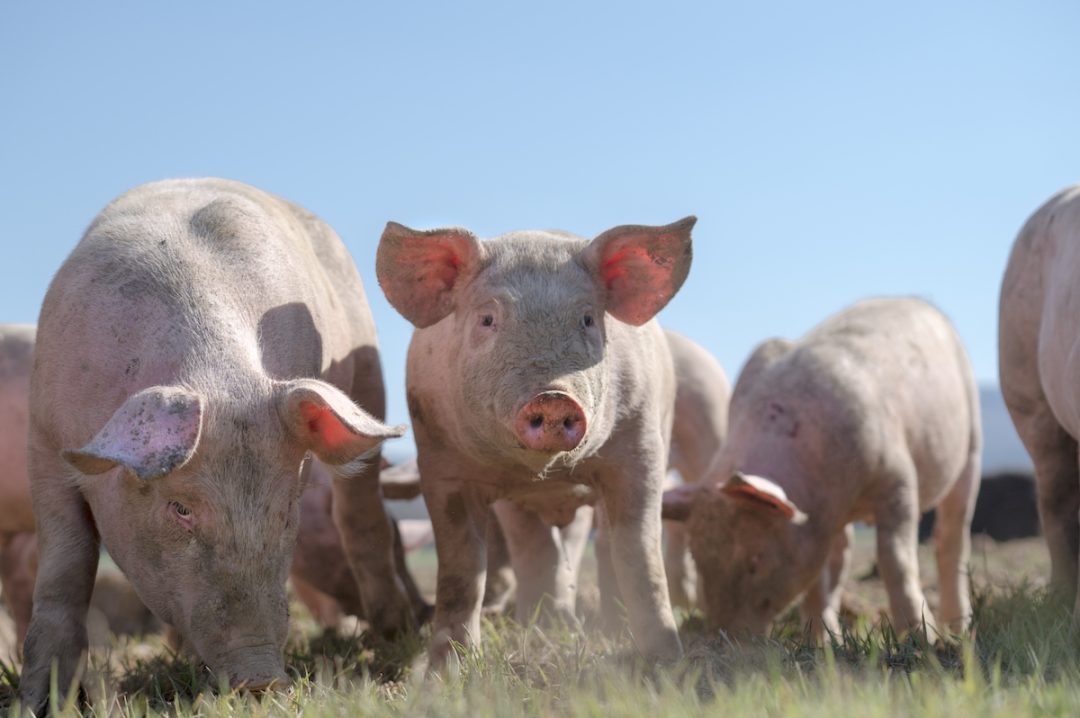
Genus PLC, a multinational biotech firm specializing in animal genetics, announced that the U.S. Food and Drug Administration (FDA) has approved its genetically edited pig for entry into the American food supply. The pig has been engineered to resist a respiratory virus, marking the first time the FDA has authorized the commercial sale of a CRISPR-edited food animal in the United States.
“This landmark approval follows years of close collaboration with the FDA and is a significant step on the pathway to PRP commercialisation in the U.S.,” the company stated on April 30. “FDA approval is a fantastic achievement,” added CEO Jorgen Kokke.
The animal in question, dubbed the PRP (PRRS Resistant Pig), was developed to combat Porcine Reproductive and Respiratory Syndrome — a disease known to cause reproductive failure, respiratory illness, and, according to some studies, a surge in antibiotic use on affected farms.
Genus has already secured favorable regulatory treatment in countries such as Brazil, Colombia, and the Dominican Republic, where its gene-edited pigs will be treated “the same as any other pigs.”
What Is CRISPR?
CRISPR — short for Clustered Regularly Interspaced Short Palindromic Repeats — is a gene-editing tool derived from a bacterial immune system. It enables scientists to locate and modify specific DNA sequences. In biotechnology circles, it is often praised for being faster, cheaper, and more precise than previous genetic engineering techniques.
To create the PRP, Genus scientists used CRISPR to disable a gene that allows the PRRS virus to enter pig cells. The result is a line of pigs that are resistant to the virus. But this is not a one-time fix. These are germline edits — heritable changes that will persist across generations and become embedded in global livestock populations.
For sure, it’s a remarkable technological leap. But its consequences — biological, ethical, and ecological — remain largely unexamined.
The Disease They’re Targeting
Porcine Reproductive and Respiratory Syndrome is believed to be one of the most economically damaging swine diseases worldwide. It spreads easily, suppresses immune function, and leads to high mortality in young pigs.
However, the rush to a genomic solution masks the fact that PRRS is not an insurmountable problem. It can, and has been, mitigated through more conventional means: biosecurity, improved farm hygiene, and selective breeding for natural resistance.
Certainly, none of these alternatives are as headline-grabbing as gene editing. But they’re tested, reversible, and relatively low-risk. They also leave room for local oversight and adaptation — something biotech does not.
The Risks
So, what could go wrong with CRISPR-ed pigs?
Editing the genome, no matter how targeted, carries inherent uncertainty. CRISPR is known to cause “off-target effects,” where edits land in unintended regions of DNA. In animal studies, these mutations have been associated with immune dysfunction, developmental abnormalities, and cancers.
Beyond the molecular level, there’s a systemic risk: monoculture. A livestock population genetically streamlined for a single trait becomes vulnerable to new threats. Nature doesn’t stand still. Viruses mutate. A uniform herd is not a resilient one.
Then there is the ethical question. Should we be rewriting animal genomes to accommodate industrial farming — or should we be rethinking the system that demands such extremes?
Finally, once Frankenswine enter the food chain, there’s no coming back. The genetic material will be replicated through artificial insemination, embryo transfer, and global breeding programs. Even if the technology is later reconsidered or banned, there is no mechanism to undo its spread. The change will be built into the species — and into the food supply.
What It Could Mean for Us
The implications for consumers go far beyond pork.
There are no long-term studies on how consuming CRISPR-edited animals affects human health. Americans are told that the edits are precise, stable, and safe. But biology is complex, and the consequences of altering an organism’s genome may not reveal themselves immediately.
Changes in metabolism, hormone levels, or immune function — subtle in the animal — could alter the nutritional content or allergenic potential of the meat. There is also a risk that new proteins or byproducts generated by the edit could provoke adverse reactions, particularly in children or individuals with autoimmune disorders.
There’s another paradox: Genus claims these pigs will reduce antibiotic use. But if the edits result in unexpected vulnerabilities, farms may respond with more antibiotics, not fewer.
Worse still is the precedent. Approving one gene-edited animal without robust transparency makes it easier to approve the next, and the next — each with less scrutiny and less public awareness. This isn’t just scientific progress. It’s regulatory erosion.
Where Are the Regulators?
The FDA’s approval highlights just how far current regulation has lagged behind modern biotechnology.
The agency classifies gene edits in animals as “new animal drugs” — a framework established long before CRISPR existed. As a result, regulators focus primarily on whether the edited animal functions as intended and is safe to consume. Broader consequences — ecological impact, gene flow across populations, long-term public health effects — are not part of the formal review process.
Critically, the FDA does not require independent testing. According to FDA Guidance for Industry #187, sponsors are responsible for submitting the safety and effectiveness data for gene-edited animals — data that is typically produced by the applicant or contracted labs, not independently verified.
Once approved, there is no continuous, government-led surveillance of gene-edited animals in the food system. The FDA expects companies to implement their own monitoring plans. The agency may inspect or request data, but there is no formal infrastructure for tracking long-term outcomes in the food supply or the environment.
It’s oversight by proxy: a self-certification model in which the regulator relies on the regulated.
How GMO Products Are Regulated
If that sounds familiar, it should. The broader regulation of genetically modified organisms (GMOs) in the U.S. isn’t much stronger.
Formally, responsibility is divided between three federal agencies:
- FDA for food safety;
- USDA for agricultural oversight; and
- EPA for gene-modified pesticide traits.
No single agency has full authority over the life cycle of a GMO. Nor does any agency bear responsibility for long-term monitoring or ethical review.
Even labeling is often optional. The USDA’s “bioengineered” designation excludes many CRISPR-modified products — particularly those that don’t introduce foreign DNA. That means gene-edited food can enter the market unlabeled, untested beyond narrow parameters, and virtually invisible to the public.
By contrast, the European Union, Japan, and even China require stronger oversight, labeling, and environmental review.
In the United States, the market moves faster than the law. And the public is rarely invited to catch up.
Who Gave FDA the Mandate?
The Founders never envisioned the federal government regulating the genetic blueprint of livestock. Decisions this complex and far-reaching were not meant to rest with agencies dependent on corporate data and shielded from public accountability.
These choices should be debated at the local level: By states and communities. By people who live alongside the consequences.
Instead, we have a centralized system issuing approvals for technologies it does not fully assess — backed by data it does not independently verify — on behalf of industries that have everything to gain and little to lose.





